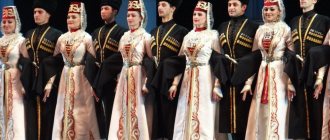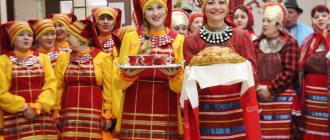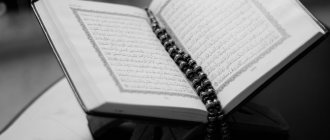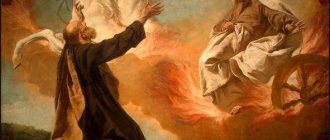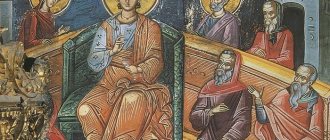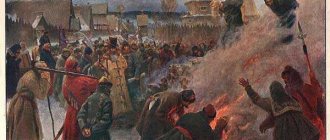Tatars are the titular people of the Republic of Tatarstan, which is included in the Russian Federation. This is a Turkic ethnic group with many subethnic groups. Due to the widespread settlement in the regions of Russia and neighboring countries, they influenced their ethnogenesis, assimilating with the local population. Within the ethnic group there are several anthropological types of Tatars. Tatar culture is filled with national traditions that are unusual for Russians.
Where live
Approximately half (53% of the total) Tatars live in the Republic of Tatarstan. Others are settled throughout the rest of Russia. Representatives of the people live in the regions of Central Asia, the Far East, the Volga region, and Siberia. According to territorial and ethnic characteristics, the people are divided into 3 large groups:
- Siberian
- Astrakhan
- Living in the Middle Volga region, the Urals.
The last group includes: Kazan Tatars, Mishars, Teptyars, Kryashens. Other subenos include:
- Kasimov Tatars
- Perm Tatars
- Polish-Lithuanian Tatars
- Chepetsk Tatars
- Nagaibaki
Mix of styles
The Tatars lived at the border of different cultures. The East, Europe, Russia, Islam, Christianity, polytheism - all this influenced the architectural style. The mosques are especially colorful. Since the religion of the Mongol-Tatars is Islam, the khans actively built religious buildings. But initially they had nothing in common with the openwork mosques of Turkey and Saudi Arabia.
Castles became God's houses. This was a necessary necessity, since the Horde was constantly at war. Subsequently, by order of Ivan the Terrible, almost all centers of Islamic culture that the tsarist troops could reach were defeated. Tatars living in Russia were forced to convert to Orthodoxy.
Number
There are 8,000,000 Tatars in the world. Of these, about 5.5 million live in Russia and the constituent entities of the Russian Federation. This is the second largest population after citizens of Russian nationality. At the same time, there are 2,000,000 people in Tatarstan, 1,000,000 in Bashkortostan. A small number moved to regions neighboring Russia:
- Uzbekistan - 320,000;
- Kazakhstan - 200,000;
- Ukraine - 73,000;
- Kyrgyzstan - 45,000.
A small number live in Romania, Turkey, Canada, USA, Poland.
Kazan is the capital of Tatarstan
Followers of the prophet
The founder of this religion was Muhammad. This simple man lived in the city of Mecca and worked as a merchant for a long time. The man received visions, and in 615 he decided to preach publicly. Along with the fans, the pursuers also appeared. After his death, Islam split into two lines. This was due to the fact that the disciples could not determine who would succeed the prophet.
A minority became supporters of Shiite Islam, and more than 90% became supporters of Sunni Islam. What religion do the Tatars belong to today? They are Sunni Muslims by religion.
According to the theory, Muhammad was the harbinger of the word of God. Unlike Christianity, the prophet was not the son of God. The name Allah translates as “one god,” and his earthly home is a mosque. It is worth noting that the Tatars, who were accustomed to leading a nomadic lifestyle, were not inclined to construction. Only thanks to the adoption of Islam did cities appear on their lands. They were designed by architects from Arab countries.
Name
The self-name of the nation is Tatarlar. There is no clear version of the origin of the term “Tatars”. There are several versions of the etymology of this word. The main ones:
- The root tat means “to experience”, plus the suffix ar - “receiving experience, advisor.”
- Derived from tatuvla - “peaceful, ally.”
- In some dialects, tat means “foreigner.”
- In Mongolian, the word tatari means “poor speaker.”
According to the last two versions, these words were used to call the Tatars by other tribes who did not understand their language, for whom they were foreigners.
The ethnopolitical situation in the power of Genghis Khan
Initially, one of the Mongolian tribes was called Tatars. According to Mongolian legends, Genghis Khan massacred all the men of this tribe. Only a few survived by chance. However, for some reason this tribe became famous in Rus' and the West. The arriving Mongol conquerors were most often called Tatars.
Later this name spread to many Turkic peoples living within the Mongol Empire. The ancestors of these peoples were, as a rule, conquered by the Mongols of Genghis Khan, and then, as vassals, they themselves took part in his campaigns.
The population of the western part of the Mongol Empire was predominantly Turkic. It is believed that the relatively few Mongols quickly disappeared into the mass of the Turkic population.
The situation was different in the eastern part of the Mongol Empire. Here the Mongols ruled China for more than a century. But in the last third of the 14th century they lost power there. In the remaining territory, the Mongols remained the predominant ethnic group.
The religious situation in different parts of the collapsed empire was determined by these ethnic processes.
Story
The first evidence of the existence of Tatar tribes was found in Turkic chronicles. Chinese sources also mention the Tatars as people who lived along the banks of the Amur. They date back to the 8th-10th centuries. Historians believe that the ancestors of modern Tatars were formed with the participation of Khazar, Polovian nomads, tribes inhabiting Volga Bulgaria. They united into one community with their own culture, writing, and language. In the 13th century, the Golden Horde was created - a powerful state that was divided into classes, aristocracy, and clergy. By the 15th century it had broken up into separate khanates, which gave rise to the formation of sub-ethnic groups. At a later time, mass migration of Tatars began across the territory of the Russian state. As a result of genetic studies, it turned out that different Tatar subethnic groups did not have common ancestors. There is also a large diversity of genome within subgroups, from which we can conclude that many peoples influenced their creation. Some ethnic groups have a large percentage of the genome of Caucasian nationalities, while Asian ones are almost absent.
Modern religious composition of the population
Modern Tatars are divided into two main camps:
- Muslims – 65%;
- Orthodox Tatars – 30%;
- other religions – 5%.
The common shrine of the two main faiths is the most ancient Umayyad mosque in Syrian Damascus, built in 96 after the Hegira. Its treasuries contain the head of John the Baptist. He is revered as a prophet by Muslims and Christians.
Muslims and Islam
The Tatars' acquaintance with Islam dates back to the 5th century, when the Prophet Muhammad lived. The formation of the faith occurred during the reign of the powerful Yuan dynasty. Its founder was the grandson of Genghis Khan. The traditions of Allah's messengers conquered the Volga basin at the same time as Christianity conquered the banks of the Dnieper. If the “Path from the Varangians to the Greeks” was the start for Byzantine preachers in Kyiv, then the Muslim school grew stronger from the Great Ocean - the Pacific (Pacific) to the banks of the Volga.
Islam penetrated the ethnic group in two ways:
- with the advent of the Golden Horde;
- with the help of Arab missionaries.
Strengthening Islam became an urgent need when the Golden Horde was divided into Tatar khanates: Kazan, Astrakhan, Crimean, Nogai and the Great Horde. This happened after the collapse of the Mongol Empire in the middle of the 13th century. Muslim holy places are located next to mosques, which were built under the influence of the elegance of Byzantine architecture. Over time, buildings for preaching Islam absorbed the cult traditions of the Ottoman Empire.
The Al-Marjani Mosque in Kazan was the result of the policy of tolerance during the reign of Catherine II. It is perceived to this day as the spiritual center of the Tatar people.
Islam is based on five pillars that the Tatars observe:
- religion presupposes shahada - a testimony of faith in Allah;
- namaz - daily prayer five times a day;
- uraz - fasting during Ramadan;
- zakat - donation;
- Hajj is worship and pilgrimage.
Tatars are Christians
The 16th century was marked for Russia by the transition to a new state form of government - the kingdom. During this period, the Astrakhan and Kazan Khanates were annexed, and the issue of faith was tantamount to the issue of security. The power of Islam and the Golden Horde, having held out for three centuries, fell. The Crimean Khan, after his complete defeat at Molodi in 1572, accepted Turkish citizenship, and the khans of Kazan and Astrakhan accepted Russian citizenship. Therefore, the Tsar of All Rus', Ivan the Terrible, baptized the Tatars according to the customs accepted in Rus'.
Time is capable of uniting and dividing peoples, nations, ethnological groups according to characteristics. It was long believed that the Volga ethnic group of Christian Tatars began to profess Orthodoxy after the capture of Kazan in 1552.
This video tells the story of the capture of Kazan by Ivan the Terrible.
The emergence of a separate ethnic group on the Volga
Kryashens are Orthodox baptized Tatars. Academician Glukhov, a Tatar by nationality, suggests that this community was originally Kerait Christians. They retained historical memory after being captured by Genghis Khan.
Baptized Tatars feed the origin of their faith with historical facts:
- In 1926, the population census showed that their number was 121 thousand.
- Since 1939, when passports were replaced, they were recognized as Tatars in some regions, Russians in others.
- In 2002, the history of the people changed dramatically, and they received the status of a sub-ethnic group of Tatars.
- Ethnicity develops national culture, supporting identity and religion, native language. Deacon Yakov became a famous poet of the 19th century thanks to his persistence in upholding the traditions of his ethnic group in his work.
Kazan, Nizhnekamsk, Mamadyshsky district and Naberezhnye Chelny are the territories where the Kryashen community is settled. In 1996, hope arose for the restoration of the temple in the name of the Tikhvin Icon of the Mother of God.
Researchers believe that the main evidence of the existence of the Kryashens as a separate people is:
- a language that has practically no Arabisms associated with Islamic culture;
- autonomy of residence from other Tatars.
With the formation of a spiritual center in the church in the name of the Tikhvin Icon of the Mother of God in the 90s, a Sunday school was opened. Priests perform baptismal ceremonies. There is a national museum of history and culture at the temple, and a folk choir has been created. The Holy Scriptures are translated for worship in the native language.
Appearance
Tatars of different ethnic groups have different appearance. This is due to the large genetic diversity of types. In total, 4 types of representatives of the people were identified based on anthropological characteristics. This:
- Pontic
- Sublaponoid
- Mongoloid
- Light European
Depending on the anthropological type, people of Tatar nationality have light or dark skin, hair and eyes. Representatives of the Siberian ethnic group are most similar to Asians. They have a wide, flat face, a narrow eye shape, a wide nose, and an upper eyelid with a fold. The skin is dark, the hair is coarse, black, the color of the iris is dark. They are short and squat.
Volga Tatars have an oval face and fair skin. They are distinguished by the presence of a hump on the nose, apparently inherited from the Caucasian peoples. The eyes are large, gray or brown. Tall men with good physique. There are blue-eyed and fair-haired representatives of this group. Kazan Tatars have medium-dark skin, brown eyes, and dark hair. They have regular facial features, a straight nose, and clearly defined cheekbones.
Aged architecture
Despite persecution and obstacles, some of the monuments were rebuilt and began to function again. Especially in the capital of the modern Republic of Tatarstan. By the way, not only those Tatars whose religion is Islam had a hand in this.
The first building, which was founded as a symbol of two faiths (Orthodoxy and Islam) in one city, was the restoration of the place of worship of al-Marjani. Another Muslim prayer building in Kazan is not inferior in splendor - Apanaevskaya. Construction began in 1768. What is noteworthy is that the project was approved by Catherine II herself, and the funds were allocated by the Islamic community.
On the territory of modern Russia there are other, no less significant monuments of Islam. Unfortunately, very few of them have been preserved in their original form, but the Islamic community continues to actively work to restore its heritage.
Life
The main occupations of the Tatar tribes were:
- arable farming;
- pasture-stall livestock farming;
- horticulture.
Hemp, barley, lentils, wheat, oats, and rye were grown in the fields. Agriculture was of a three-field type. Cattle breeding was expressed in the breeding of sheep, goats, bulls, and horses. This occupation made it possible to obtain meat, milk, wool, and skins for sewing clothes. Horses and oxen were used as draft animals and for transportation. Root crops and melons were also grown. Beekeeping was developed. Hunting was carried out by individual tribes, mainly living in the Urals. Fishing was common among the ethnic groups inhabiting the banks of the Volga and Ural. Among the crafts, the following activities have become widespread:
- jewelry production;
- furriery;
- felting craft;
- weaving;
- leather production.
The national Tatar ornament is characterized by the presence of floral and plant designs. This shows the people’s closeness to nature, the ability to see beauty in the world around them. The women knew how to weave and made their own everyday and festive costumes. Details of clothing were decorated with patterns in the form of flowers and plants. In the 19th century, embroidery with gold threads became popular. Shoes and wardrobe items were made from leather. Products made of leather of different shades, sewn together, were popular.
Until the 20th century, tribes had tribal relations. There was a division between the male half of the population and the female half. The girls were isolated from young people; they did not communicate until the wedding. A man had a higher status than a woman. Remnants of such relations persist in Tatar villages to this day.
All Tatar families are deeply patriarchal. Everything the father says is fulfilled unquestioningly. Children revere their mother, but the wife has virtually no say. Boys are brought up in permissiveness, since they are the successors of the family. From childhood, girls are taught decency, modesty, and submission to men. Young girls know how to run a household and help their mother around the house. Marriages were concluded by agreement between parents. The young people's consent was not asked. The groom's relatives were obliged to pay the bride price - ransom. Most wedding ceremonies and feasts took place without the presence of the bride and groom; numerous relatives took part in them. The girl got to her husband only after paying the dowry. If the groom arranged for the bride to be kidnapped, the family was freed from the ransom.
Faith in Christ
According to many researchers, today almost 20% of the Turkic tribes in Russia are Orthodox for several generations. And their numbers are slowly growing. Since in mixed marriages of Orthodox and Muslims, the child is usually baptized.
It is believed that some individual groups of Tatars began to profess Christianity back in the 10th century. They had to change their views under pressure from the Golden Horde and the khans, who brutally dealt with everyone who spoke out in defense of Orthodoxy. It is noteworthy that the religion of the Crimean Tatars was originally Christian. The local population refused to accept Islam. The result of this behavior was the destruction of all Orthodox churches.
Housing
Tatar tribes located their settlements along the banks of rivers, near major roads. The villages were built chaotically, without an orderly layout. The villages were characterized by winding streets, sometimes leading to dead ends. A solid fence was erected on the street side, outbuildings were built in the courtyard, placing them in a group or in the shape of the letter P. The administration, mosque, and trading shops were located in the center of the settlement.
Tatar houses were log buildings. Sometimes the dwelling was made of stone, less often it was made of adobe. The roof was covered with straw, shingles, and boards. The house had two or three rooms, including a vestibule. Rich families could afford two- and three-story dwellings. Inside, the house was divided into female and male halves. They made stoves in the houses, similar to the Russian ones. They were located next to the entrance. The inside of the home was decorated with embroidered towels and tablecloths. The outside walls were painted with ornaments and trimmed with carvings.
Culture and life
Initially, these people were engaged in cattle breeding and less often planted vegetation. They lived in huts. On Kazan lands it is customary to be hospitable, so they generously welcome and treat guests.
Be sure to wash your hands before eating. Meals at the table began and ended with prayer. It is considered bad manners if you act without permission at the table without the permission of the elders.
On the eve of the wedding, it is customary to decorate the house with ribbons, flowers and other materials, and the more, the better.
The embroidery of Tatar women is highly valued. They were good weavers. Even today, embroidered towels are a valuable product!
Cloth
Tatar folk costume was formed under the influence of Asian culture. Some elements were borrowed from the Caucasian peoples. The outfits of different ethnic groups vary slightly. The basis of a men's suit consists of such elements as:
- Long shirt (kulmek).
- Harem trousers.
- Long sleeveless vest.
- Wide belt.
- Skullcap.
- Ichigi.
The tunic was decorated at the top and bottom with national ornaments; it was belted with a wide, long piece of fabric with fringe at the ends. In addition to the shirt, loose pants were worn. Over the set they wore a sleeveless vest, the fronts of which were equipped with embroidery. Sometimes they wore a long robe (almost to the floor) made of cotton material. The head was covered with a skullcap, which was generously decorated with national ornaments. Some ethnic groups wore fezzes—Turkish headdresses. In cold weather, they wore a beshmet, a narrow-cut caftan down to the knees. In winter they wore sheepskin coats and fur hats. Ichigi served as shoes. These are light, comfortable boots made of soft leather without heels. Ichigi were decorated with colored leather inserts and ornaments.
The outfits of Tatar girls are very colorful and feminine. Initially, girls wore a costume similar to men's: a long (floor-length) tunic and wide pants. Ruffles were sewn to the bottom edge of the tunic. The upper part was embroidered with patterns. In modern outfits, the tunic has been transformed into a long dress with a narrow bodice and a flared hem. The dress emphasizes the female figure well, giving it a curvaceous shape. A vest of medium length or waist-length is worn over it. It is richly decorated with embroidery. The head is covered with a cap like a fez, a turban or a kalfak.
National costume of the Tatars
The traditional Tatar costume for men and women consisted of wide-leg trousers and a shirt, over which a sleeveless vest, often embroidered, was worn. The Tatar women's costume was distinguished by an abundance of jewelry made of silver, cowrie shells, and bugles. The outerwear was a Cossack, and in winter - a quilted beshmet or fur coat. Men wore a skullcap on their heads, and on top of it a fur hat or felt hat. Women wore an embroidered velvet cap and scarf. The traditional shoes of the Tatars are leather ichigs with soft soles, over which galoshes were worn.
Sources: Peoples of Russia: Atlas of Cultures and Religions / ed. V.A. Tishkov, A.V. Zhuravsky, O.E. Kazmina. — M.: IPC “Design. Information. Cartography", 2008.
Peoples and religions of the world: Encyclopedia / Ch. ed. V.A. Tishkov. Editorial team: O.Yu.Artemova, S.A.Arutyunov, A.N.Kozhanovsky, V.M.Makarevich (deputy chief editor), V.A.Popov, P.I.Puchkov (deputy chief editor) ed.), G.Yu.Sitnyansky. - M.: Great Russian Encyclopedia, 1998, - 928 p.: ill. — ISBN 5-85270-155-6
Traditions
The Tatars are a nation with a dynamic temperament. They are very active and love dancing and music. Tatar culture has many holidays and customs. They celebrate almost all Muslim holidays, and they also have ancient rituals associated with natural phenomena. The main holidays are:
- Sabantui.
- Nardugan.
- Nowruz.
- Eid al-Fitr.
- Eid al Adha.
- Ramadan.
Ramadan is a holy holiday of spiritual purification. It is called by the name of the month of the Tatar calendar, the ninth in a row. There is strict fasting throughout the month; in addition, you need to pray fervently. This helps a person to cleanse himself of dirty thoughts and become closer to God. This strengthens faith in Allah. Eid al-Adha is celebrated to mark the end of fasting. On this day you can eat everything that Muslims cannot afford during fasting. The holiday is celebrated by the whole family, with the invitation of relatives. In rural areas, celebrations are held with dancing, singing, and fairs.
Kurban Bayram is a holiday of sacrifice, celebrated 70 days after Eid al-Adha. This is the main holiday among Muslims around the world and the most beloved. On this day, sacrifices are made to please Allah. Legend has it that the Almighty asked Prophet Ibrahim to sacrifice his son as a test. Ibrahim decided to fulfill the desire of Allah, showing the steadfastness of his faith. Therefore, God left his son alive, ordering him to slaughter a lamb instead. On this day, Muslims must sacrifice a sheep, ram or goat, keep some of the meat for themselves, and distribute the rest to those in need.
Sabantuy, the festival of the plow, is very significant for the Tatars. This is the day the spring field work ends. It is dedicated to work, harvest, and a healthy lifestyle. Sabantuy is celebrated cheerfully and on a grand scale. On this day, festivities, dances, and sports competitions begin. Competitions of singers and dancers are held. It is customary to invite guests and serve refreshments. Porridge, colored eggs, and buns are placed on the table.
Nardugan is an ancient pagan holiday of the winter solstice. It is celebrated at the end of December. Translated from Mongolian, the name of the holiday means “birth of the sun.” There is a belief that with the beginning of the solstice, the forces of darkness lose their power. Young people dress up in costumes, masks and walk around the courtyards. On the day of the vernal equinox (March 21), Novruz is celebrated - the arrival of spring. According to the astronomical solar calendar, a new year is coming. Daylight overtakes night, the sun turns to summer. Another interesting custom is that Tatars do not eat pork. This is explained by the laws of Islam. The point is that Allah knows what benefits his creatures, that is, people. He forbids eating pork because it is considered unclean. This lock is reflected in the Koran, the holy book for Muslims.
Old beliefs of the Tatars
According to established cultural ideas, a person in a patriarchal society perceived himself as a part of nature and the surrounding world. The most ancient forms of religion were based on these ideas.
Before the adoption of Islam, all representatives of the Turks worshiped Tengri. This is the deity of the sky and the sun. Tatar gods are holy places: hills, water sources, trees, stones.
Core Beliefs:
- totemism - recognition of certain species of animals or plants as sacred;
- fetishism - worship of idols;
- animism - belief in the existence of souls and spirits, in the animation of the entire natural world;
- euhemerism - the cult of dead or living “great people”.
In the religious tradition of the Kryashens (Tatars of the Volga and Ural regions) there was a cult of trees and animals. The tree was one of the main images of the traditional religions of the Turkic peoples. This cult was formed in the pre-nomadic period of life, when people lived in the foothills of Altai. The tree acted as the center of the world, connecting the earth with the sky. Therefore, important processes occurring in nature and society were associated with it.
Three elements complement each other and rule the world:
- tree;
- mountain;
- water.
In Tatar mythology, the model of the world was built around the image of the “world tree” (“yafan agachy”). Among the old-baptized Tatars, the image of the “world tree” was closely associated with the lonely growing sacred oak (“tәre”), the “Tengri tree.” It was considered a kind of connecting channel with the Supreme Deity.
The “World Tree” acted as an information link between three worlds:
- average - a person;
- lower - spirits;
- top - divine.
The micro-image of the cosmic universe and the creator of the world - the Supreme God - was the basis of the ancient religious beliefs of the Turks. A tall tree (an oak with dense foliage), according to the Huns and Sabir (Suvar), was considered a link with the main deity Tengrikhan, who lived in heaven and was revered along with Tengri. Pagan rituals and sacrifices were performed near this tree.
The holy tree symbolized the well-being and security of the country:
- healed the sick;
- elevated the poor and the poor;
- preserved from drought;
- nourished plants and soil.
Before him they prayed for an increase in livestock and a grain harvest. This tree was not allowed to be touched with impunity: to cut down and break off branches.
Immortality of the soul and animism
Before believing in Allah, the Tatars worshiped spirits. The religion of the Tatar people was transformed due to fear of death. Thus, the soil of animism became fertile for belief in the immortality of the soul. The cult of burials of the dead strengthened with the division of society into castes. Animism kept pace with the growth of material divisions within tribes, becoming the basis of class society. The nomadic Tatars led a camping lifestyle.
Plano Carpini's opinion on the burials:
- the funeral rite was carried out secretly and secretly;
- the burial place was chosen away from the camp and the location of the army;
- the pit had a tunnel on the side, and the place was hidden by turf so that it could not be identified as a burial ground.
This method of burial distinguished the nomads from the sedentary Mongols, who allocated special spaces for the dead, leaving the bodies in the open air. The number of deaths during the campaign was determined simply. When getting ready to go on a hike, everyone took a stone and laid it along with the others. This is how the mound was formed. Returning, the warriors dismantled the stones. The remainder spoke of losses. The presence of such mounds may well indicate the scale of the battle.
Funeral rites depended on the caste of the deceased and the circumstances, over time acquiring a mass of ritual traditions. But their basis was, as in ancient times, the fear of death and belief in the afterlife of the soul.
Epochs made adjustments to religion. If the modern Constitution of the Russian Federation guarantees freedom of choice of faith, then in ancient times faith was determined by the power of the ruler.
Names
Tatars call their children beautiful, sonorous names that have deep meaning. Popular male names are:
- Karim - generous;
- Kamil - perfect;
- Anwar - radiant;
- Arslan - lion;
- Dinar is precious.
Girls are called names that reveal natural qualities, symbolizing beauty and wisdom. Common female names:
- Venus is a star;
- Gulnara - decorated with flowers;
- Kamalia - perfect;
- Lucia - light;
- Ramilya - miraculous;
- Firyuza is radiant.
Food
The peoples of Asia, Siberia, and the Urals had a great influence on Tatar cuisine. The inclusion of their national dishes (pilaf, dumplings, baklava, chak-chak) diversified the Tatar diet and made it more diverse. The Tatar cuisine is rich in meat, vegetables, and seasonings. It contains a lot of various baked goods, confectionery, nuts, and dried fruits. In the Middle Ages, horse meat was widely consumed; later they began to add meat from chickens, turkeys, and geese. The Tatars' favorite meat dish is lamb. Lots of fermented milk products: cottage cheese, ayran, sour cream. Dumplings and dumplings 1 are a fairly common food on the Tatar table. Dumplings are eaten with broth. Popular dishes of Tatar cuisine:
- Shurpa is a fatty, thick soup based on lamb.
- Belish is a baked pie made from unleavened dough, stuffed with meat and potatoes, rice or millet. This is the most ancient dish, it is served on the festive table.
- Tutyrma is a homemade gut sausage stuffed with minced meat and rice.
- Beshbarmak - stew with homemade noodles. It is traditionally eaten with the hands, hence the name “five fingers”.
- Baklava is a treat that came from the East. It is a cookie made from puff pastry with nuts in syrup.
- Chak-chak is a sweet product made from dough with honey.
- Gubadia is a closed pie with a sweet filling, which is distributed in layers. It includes rice, dried fruits, cottage cheese.
Potatoes are often used as a side dish. There are snacks made from beets, carrots, tomatoes, and sweet peppers. Turnips, pumpkin, and cabbage are used as food. Porridge is a common dish. For everyday food, millet, buckwheat, peas, and rice are cooked. The Tatar table always contains a variety of sweets made from unleavened and rich dough. These include: baursak, helpek, katlama, kosh-tele. Honey is often added to sweet dishes.
Popular drinks:
- ayran is a fermented milk product based on kefir;
- kvass made from rye flour;
- sherbet - a soft drink made from rose hips, licorice, roses with the addition of honey and spices;
- herbal teas.
Tatar cuisine is characterized by stewing, boiling, and baking in the oven. The food is not fried; sometimes boiled meat is fried a little in the oven.
Tatar people
The Tatars are the indigenous population of the Russian Federation, the second largest ethnic group and the largest people of Muslim culture in the Russian Federation.
The spiritual and cultural center of the entire Tatar people is the Republic of Tatarstan . In the capital of Tatarstan , the city of Kazan, the World Tatar Congress , uniting all Tatar communities of the Russian Federation and Tatar diasporas from all over the planet.
The Tatar ethnic group has an ancient and vibrant history, closely connected with the history of all the peoples of the Ural-Volga region and Russia as a whole.
The culture of the Tatars is unique, original and worthily entered into the treasury of world culture and civilization. It was borrowed into their traditions, language and cuisine by many peoples of Russia and Eurasia, including Turkic, Finno-Ugric, and Indo-Iranian peoples.
Gabriel Derzhavin, Mikhail Lermontov, Nikolai Karamzin, Denis Davydov, Mikhail Kutuzov, Ivan Turgenev, Alexander Kuprin, Anna Akhmatova had Tatar roots Some of the Russian historical family and aristocratic families are directly related to the transition of the Tatars, including those from the Golden Horde, to the service of the Moscow throne. These are the Apraksins, Naryshkins, Yusupovs, Arakcheevs, Kochubeis, Ogarkovs, Derzhavins, Turgenevs, Rachmaninovs, Ogarevs, Ermolovs, Akhmatovs, Karamzins, Tukhachevskys, Timiryazevs, Sheremetevs, Ushakovs, Stroganovs.
According to the 1989 census, about 7 million Tatars lived on the territory of the USSR. Of these, in the RSFSR - more than 5.5 million or 83.1% of the indicated number, including in Tatarstan - more than 1.76 million people (26.6%).
Currently, Tatars make up just over half the population of Tatarstan, their national republic. At the same time, the number of people living outside Tatarstan is -1.12 million people in Bashkortostan, -110.5 thousand in Udmurtia, 47.3 thousand in Mordovia, 43.8 thousand in Mari El, 35.7 thousand in Chuvashia. In addition, Tatars also live in the regions of the Volga region, the Urals and Siberia.
Tatars are one of the most mobile peoples. Due to landlessness, frequent crop failures in their homeland and the traditional desire for trade, even before 1917, Tatars began to move to various regions of the Russian Empire, including the provinces of Central Russia, Eastern Siberia and the Far East, the North Caucasus and Transcaucasia, Central Asia and Kazakhstan. This migration process intensified during the years of Soviet rule, especially during the period of the “great construction projects of socialism.” Therefore, at present there is practically no federal subject in the Russian Federation where Tatars live. Even in the pre-revolutionary period, Tatar national communities were formed in Finland, Poland, Romania, Bulgaria, Turkey, and China. As a result of the collapse of the USSR, Tatars who lived in the former Soviet republics - Uzbekistan (467.8 thousand), Kazakhstan (327.9 thousand), Tajikistan (72.2 thousand), Kyrgyzstan (70.5 thousand) - ended up in the near abroad. ), Turkmenistan (39.2 thousand), Azerbaijan (28 thousand), Ukraine (86.9 thousand), in the Baltic countries (14 thousand). Already due to re-emigrants from China, Turkey and Finland, since the middle of the 20th century, Tatar national diasporas have been formed in the USA, Japan, Australia, Sweden, and Germany.
According to many historians, the Tatar people with a single literary and practically common spoken language emerged during the existence of the huge Tatar state - the Golden Horde. The literary language in this state was “idel terkise” or Old Tatar . The modern literary Tatar language , based on the middle dialect, was established thanks to the activities of the established Tatar intelligentsia and patrons of the arts and the period of the rise of the Tatar national movement in the second half of the 19th – early 20th centuries.
In ancient times, the ancestors of modern Tatars used runic writing, as evidenced by archaeological finds in the Urals and Middle Volga region.
Back in 1080, in Bolgar - the capital of Volga Bulgaria, the ancient state that existed on the territory of modern Tatarstan, the Bulgarian scientist Yagkub ibn Nugman (1058–1164) opened “Dar-ul-Gulyum” (“House of Knowledge”) or, in modern language , university. In 922, Volga Bulgaria officially voluntarily adopted Islam.
Since the voluntary adoption of Islam by the ancestors of the Tatars, the Volga-Kama Bulgars, the Tatars used Arabic writing, from 1929 to 1939 - Latin script, and since 1939 they have used the Cyrillic alphabet with additional characters.
The modern Tatar language is divided into four dialects: middle (Kazan Tatar), western (Mishar Tatar), eastern (Siberian Tatar) and Crimean (Crimean Tatar). Despite dialectal and territorial differences, the Tatars are a single nation with a single literary language, a single culture - folklore, literature, music, religion, national spirit, traditions and rituals.
Even before the revolution of 1917, the Tatar nation The traditional thirst for knowledge has survived in the current generation.
The Tatars are one of the most urbanized peoples of the Russian Federation. The social groups of the Tatars, living both in cities and in villages, are almost no different from those that exist among other peoples, especially Russians.
In their way of life, the Tatars do not differ from other surrounding peoples. Modern Tatars are the Turkic-speaking part of the indigenous population of Russia, which, due to their greater territorial proximity to the East, chose Islam rather than Orthodoxy. 99% of Tatar believers are Sunni Muslims of moderate Hanafi persuasion.
Many ethnologists note the unique phenomenon of Tatar tolerance , which consists in the fact that in the entire history of the Tatars, they have not initiated a single conflict on ethnic and religious grounds. The most famous ethnologists and researchers are sure that tolerance is an invariable part of the Tatar national character.
The traditional food of the Tatars is meat, dairy and vegetable - soups seasoned with pieces of dough (tokmach noodles, chumar), porridges, sour dough bread, kabartma flatbreads. National dishes - byalesh with various fillings, usually meat (peryamyach), cut into pieces and mixed with millet, rice or potatoes; unleavened dough baked goods are widely represented in the form of bavyrsak, kosh tele, ichpochmak, gubadia, katykly salma, chak-chak ( wedding dish). Dried sausage - kazylyk or kazy - is prepared from horse meat (the favorite meat of many groups). Dried goose (kaklagan kaz) is considered a delicacy. Dairy products – katyk (a special type of sour milk), sour cream, cottage cheese. Drinks – tea, ayran (tan) – a mixture of katyk with water (used mainly in summer).
The Tatars always took an active part in all defensive and liberation wars. The victory on April 5, 1242 on the ice of Lake Peipsi over the Livonians was entirely the merit of the Tatar cavalry regiments that marched under the command of Alexander Nevsky.
In terms of the number of “Heroes of the USSR”, the Tatars occupy fourth place, and in terms of the percentage of the number of heroes for the entire nation - first place. In terms of the number of “Heroes of Russia”, the Tatars have second place.
From the Tatars came such military leaders as Army General Makhmut Gareev, Colonel Generals Rasim Akchurin and Fatih Churakov, Vice Admiral Mars Iskanderov, Rear Admirals Zinnur Lyapin, Amir Bichurin, Timur Suleymanov and many others.
Famous modern Tatar statesmen are the First President of the Republic of Tatarstan Mintimer Shaimiev, the Second President of the Republic of Tatarstan Rustam Minnikhanov, the Head of the Ministry of Internal Affairs of the Russian Federation Rashid Nurgaliev, the Minister of Economy of the Russian Federation Elvira Nabiullina.
There are many outstanding scientists among the Tatars - academicians R.Z. Sagdeev (physical chemist), K.A. Valiev (physicist), R.A. Syunyaev (astrophysicist), and others.
Tatar literature is one of the most ancient in the Russian Federation. The most ancient literary monument is the poem “The Tale of Yusuf” by the Bulgarian poet Kul Gali, written in 1236. Among the famous poets of the past one can name M. Sarai-Gulistani (XIV century), M. Muhammadyar (1496-1552), G. Utyz-Imeni (1754-1834), G. Kandaly (1797-1860). Among the poets and writers of the 20th century - classics of Tatar literature, we can highlight Gabdulla Tukay, Fatih Amirkhan, writers of the Soviet period - Galimzyan Ibragimov, Khadi Taktash, Majit Gafuri, Hassan Tufan, poet-hero Musa Jalil, Sibgat Hakim and many other talented poets and writers.
The Tatars were one of the first among the Turkic peoples to develop theatrical art. The most outstanding artists and organizers of the Tatar national theater of the early twentieth century are artist, playwright and director Gabdulla Kariev, artist and playwright Karim Tinchurin, Khalil Abjalilov, Gabdulla Shamukov, modern actors and directors: Marcel Salimzhanov, Sergei Shakurov, Renata Litvinova, Chulpan Khamatova, Marat Basharov, Kamil Larin, Timur Batrutdinov, opera singers - Khaidar Bigichev and Zilya Sungatullina, folk singers Ilgam Shakirov, Alfiya Afzalova, Khamduna Timergalieva, modern authors and performers - Zemfira Ramazanova, Zulya Kamalova, Deniz Bedretdin, Renat Bakir, Ildar Mubarakshin, Rustam Alyautdinov, Elmira Kalimullina, Malika Razakova, Saida Mukhametzyanova.
The fine art of the Tatars is original and multifaceted, the most famous are the works of such famous Tatar artists as: Baki Urmanche, Kharis Yakupov, Ahsan Fatkhutdinov, Ildar Khanov, Faizrakhman Aminov, Baynazar Almenov, Fail Islamov, Shakir Mukhamedzhanov, Abrek Abzgildin, Najip Nakkash, Anvar Sayfutdinov , Chingiz Akhmarov, Ozad Khabibullin, Rifkat Vakhitov, Ildus Murtazin, Firinat Khalikov, Kamil Mullashev, Ildus Vakhitov, Alfrid Shaimardanov, Vinera Abdullina, Alsou Timergalina, Milya Nurullina, and many others.
The sporting achievements of the Tatars also constantly make themselves felt: Wrestling - Shazam Safin, champion of the 1952 Olympic Games in Helsinki in Greco-Roman wrestling. Rhythmic gymnastics - Olympic champion and multiple world champion Alina Kabaeva, world champions Amina Zaripova and Laysan Utyasheva. Football - Rinat Dasaev, goalkeeper No. 1 in the world in 1988, goalkeeper of the Spartak team, members of the 2002 World Cup football team, attacking midfielder of the Russian national team Marat Izmailov (“Lokomotiv”-Moscow), winner of the Russian Cup 2000/01; goalkeeper of the Russian national team Ruslan Nigmatullin, Hockey - Irek Gimaev, Sergei Gimaev, Zinetula Bilyaletdinov, Tennis - world champion Marat Safin, Boxing - world champion Ruslan Chagaev, Martial arts - Ramil Gabbasov, Rafael Akchurin, Kamil Musin, and many many others.
The history of the Tatars is one of the most important parts of world history. Tatar history took place over a vast area, touched the fate of hundreds of peoples, and was accompanied by reforms, construction and reformatting of dozens of states. The scale of the history of the Tatars is incredibly large, it is difficult to grasp it at one glance. Modern Tatars are the heirs of ancient states that existed many thousands of years before the new era.
All the talk about the supposed “cruelty” of the Tatars, “Tatar hordes”, “Tatar yoke” - all these are deliberately fabricated political myths about the Tatars . The Tatars are civilization, statehood, the continuous invention of new types of tools, weapons, clothing, methods of farming, improvement of military art, agriculture, cattle breeding, crafts and government.
Rashid ad-Din names six Tatar states, and he lived in the 13th century. After him, the huge state of the Golden Horde and a number of Tatar khanates arose, and even in Asian states, the contribution of the Tatars to state building was significant. The ability to reformat state forms, and not cruelty, determined controllability in the conquered lands, otherwise the Tatars simply would not have had enough people to form garrisons. They simply left the peoples with their laws, customs, religion, their leaders and reduced taxes to the level of the Tatar tribute (10%), and for this insignificant tax they ensured security on trade routes, including on the well-known “Silk Road” and on the borders of the state .
The Tatars combined mobility with sedentism and the construction of cities, which allowed them to unite Europe and Asia, creating the first huge Eurasian state, called “Great Tartary”. The sedentary European civilization did not have mechanisms for uniting such a large space, in endless wars and civil strife. Europe had neither the resources nor the means of communication capable of moving large masses of people over vast distances. The behavior of the nomad, in essence, was globalist - wherever it was possible to feed the horses, there was a Tatar world .
In Medieval Europe, traders and travelers could hardly travel along the roads - on their way there were forests, swamps, customs barriers, extortionists and robbers, and the cities were surrounded by impenetrable walls with tightly closed gates.
The Tatars had a different picture. The Tatars were against the city walls. The Tatar cities, huge at that time, were safe and therefore open to trade and travel. The roads were well guarded. Caravanserais (Inns) stood on them. The Tatars built cities that were larger than European capitals, but did not become a purely sedentary population, but moved around. The Tatars had all the achievements of agricultural peoples but retained a nomadic culture and even demonstrated their commitment to it. For example, Uzbek Khan left Sarai for the summer with his retinue and migrated to Bolgar, while living not in a palace, but in a tent. This is explained by the fact that, due to the enormous distances, only mobile peoples who combined their advantages with a sedentary life could create a system that ensured peaceful trade between Asia and Europe. Origins of the origin of the Tatars Origins of the origin of the Tatars
Famous people
Among the Tatar people there are many talented people who have become famous throughout the world. These are athletes, scientists and cultural figures, writers, actors. Here are some of them:
- Chulpan Khamatova is an actress.
- Marat Basharov is an actor.
- Rudolf Nureyev - ballet dancer.
- Musa Jalil is a famous poet, Hero of the Soviet Union.
- Zakir Rameev is a classic of Tatar literature.
- Alsou is a singer.
- Azat Abbasov is an opera singer.
- Gata Kamsky is a grandmaster, US chess champion in 1991, and is one of the 20 strongest chess players in the world.
- Zinetula Bilyaletdinov is an Olympic champion, multiple world and European champion as a member of the hockey team, coach of the Russian national hockey team.
- Albina Akhatova is a five-time world champion in biathlon.
Most Tatars in Russia profess Islam - the religion of the Prophet Muhammad
Islam has firmly entered the history of the Tatar people in Russia. There is nothing surprising, because this adoption of Islam occurred in the 10th century, and people began to get acquainted with it in the 9th century. That is, in fact, throughout the entire written history that can be looked into today, the Tatars professed Islam. Now they don’t even have the opportunity to look back to find out about any alternative beliefs - information about them has not been preserved.
Prophet Muhammad, who established Islam in Arabia in 21 years
Islam gave its advantages to the Tatar civilization. He opened the way to Arab culture, and these are the limitless possibilities that the experience of the East provides:
- Study of Shilov's works;
- Mastering artistic techniques;
- Acquisition of scientific knowledge.
And in itself, unification with Arab countries on religious grounds is a huge advantage for the Tatars of that time.
Since then, three major religious reforms have taken place. Their main goal is to separate religion from the state. After all, faith should deal with the inner world of a person, and not with politics, economics and culture. It was successful.
If we give a brief description of the religion of the Prophet Muhammad, it is a monotheistic tradition. It was formed around the 7th century on the basis of Christian doctrine and in opposition to Arab beliefs. What kind of beliefs these were, we are unlikely to know.
The path of Islam began with large military companies that allowed this religion to gain a foothold in the Arabian Peninsula.
Islam came out of Christianity and is similar to it in many prescriptions. These are approximately the same requirements for a person, similar ideas about God and the world order.
Kul Sharif Mosque in Kazan
The differences boil down to the following:
- Ritual part;
- Dogmatic disagreements;
- The idea of authorities in spiritual life (the Koran versus the Bible);
- Various assessments of Biblical characters and Islamic religious figures.
Islam has a bad reputation because of its most radical movements, but they fundamentally contradict the humane teachings of Allah. In a short period of time, this young religion was able to grow into a global one, gain a foothold and gain large-scale influence throughout the world.
Character
The Tatar nation is very hospitable and friendly. A guest is an important person in the house; they are treated with great respect and asked to share a meal with them. Representatives of this people have a cheerful, optimistic character and do not like to lose heart. They are very sociable and talkative.
Men are characterized by perseverance and determination. They are distinguished by hard work and are accustomed to achieving success. Tatar women are very friendly and responsive. They are raised as models of morality and decency. They are attached to their children and try to give them the best.
Modern Tatar women follow fashion, look very well-groomed and attractive. They are educated, there is always something to talk about with them. Representatives of this people leave a pleasant impression of themselves.
Description of the ethnic group
Women have slightly narrowed eyes and prominent cheekbones on their faces. They usually have a strong build. Very often they hide their beauty, as is customary among Asians. In most cases, they lead a sedentary lifestyle, which is typical in Asian countries, where men do all the work and wives do only light household tasks. All Tatars are clean, they are characterized by cunning, but at the same time there is a struggle for justice. Men also have a beautiful appearance and physique, dark eyes. Very jealous and slightly proud.
